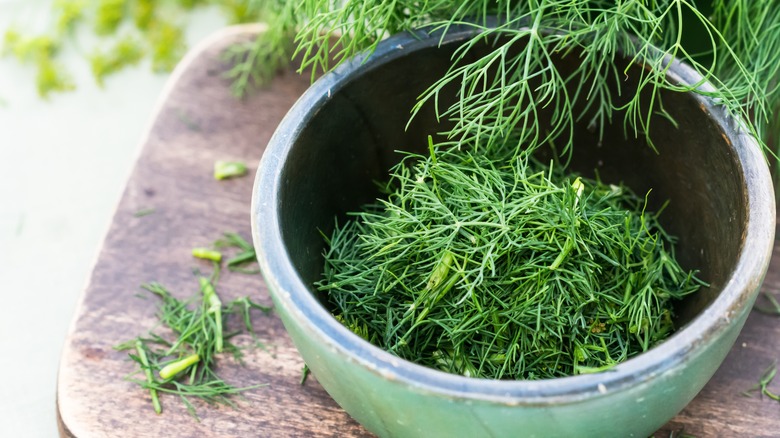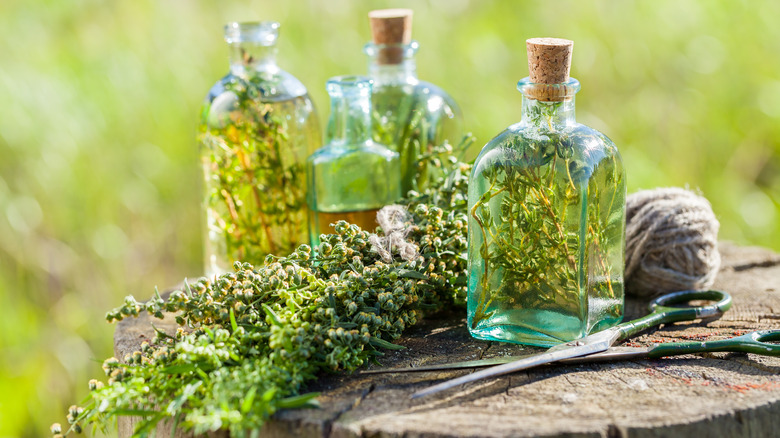Don't Let Your Fresh Dill Go Bad. Turn It Into Vinegar
Keeping your dill fresh can feel like a Sisyphean uphill battle. In the refrigerator, it's supposed to last for roughly a week and a half, but frequent buyers know all too well that this isn't always the case. That longevity (or lack thereof) can be a wide-ranging beast with delicate, herbaceous dill. If you find yourself bringing your fresh dill home, stashing it in your fridge, and then transferring it straight to the garbage can before you get a chance to use it, we feel you.
Instead of tossing out your wilted, past-its-prime bundle, turn that dill into flavorful dill vinegar. Dill is already a key ingredient in canning pickles, a technique whose chief component (besides the cucumbers themselves) is vinegar. Use that mouth-watering dill vinegar flavor as a knockout condiment, capturing that bold dill flavor in the vinegar, which is totally shelf-stable at room temperature. That means it won't clutter your fridge and can sit pretty on your kitchen countertop, looking both impressive and stylish.
Use apple cider vinegar for a funky back end (great over savory recipes) or white wine vinegar to let the dill flavor shine on the palate. You could also steep garlic cloves and yellow mustard seeds into the mix for a spicy dill vinegar. Or, add a little olive oil and honey to transform this dill vinegar into a pleasant vinaigrette.
An herbaceous, acidic condiment that reduces food waste
To make flavorful dill vinegar, grab a sterilized resealable container like a lidded Mason jar or corked glass apothecary bottle, fill it with vinegar and fresh dill, and let the mixture steep at room temperature for two weeks before using. Start with two cups of vinegar per batch. You can add more or less of the herb to control the pungency of your condiment.
Alternatively, you could skip the long infusion time and whip up a batch of dill vinegar that's ready to use instantly. For this method, grab a saucepan and gently heat about one cup of vinegar on the stove. Around 110 degrees Fahrenheit is ideal. Then, add in the chopped dill, allowing it to soak up the liquid. You can use the dill leaves, seeds, and sprigs here, making this a true zero-waste recipe from start to finish. Let the mixture cool off, then stir in more vinegar, strain the combination through a cheesecloth, and you're all set. In an airtight container, your dill vinegar will last at room temperature for up to six months.
Use it as a refreshing salad dressing on crisp green bowlfuls. Or, drizzle it over cold batch salads like potato salad (instead of mayo), macaroni salad, or coleslaw for a crowd-pleasing covered dish to share at potlucks and barbecues all summer long. You could even use it to spruce up tuna salad. That chilled, acidic brightness would cut through the umami brininess of the fish.

